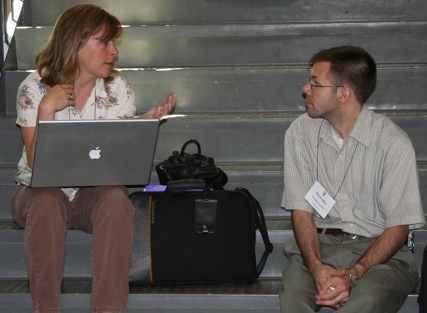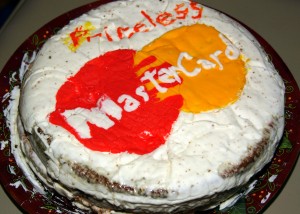Conversations => Relationships => Value (Part 2)
Conversations => Relationships => Value
In Part 1 of this post, I introduced this core component of Conference 2.0.
Here’s why this sequence is an important consideration for modern meeting design, and how it’s enhanced by Conference 2.0 designs.
Why should customers buy from you?
Sometimes, business value grows out of the barrel of a gun. When you have a monopoly on a product or service, you can charge as much as the market will bear. But when competition exists, you must use different strategies. For example, you can play race-to-the-bottom: squeezing your suppliers for rock bottom costs that, hopefully, are lower than your competitors. Or, you can differentiate what you offer in many other ways: better service, more options, faster delivery, longer warranties, superior customer support, etc. Thousands of books have been written about how to profitably and consistently market and sell. And, except perhaps for the most cutthroat commodity markets, the ability to build and maintain good relationships with your customers is a key component of most techniques.
This ability is even more crucial in today’s markets, because of four factors:
- The increased complexity of products and services.
- The increased variety of products and services.
- The increased speed of product and service development.
- The increased transparency in many marketplaces caused by online customer reviews and feedback.
The first three factors make it harder for potential customers to evaluate whether a specific product or service is a desirable fit for their needs. The last amplifies any deficiencies (perceived or otherwise) that may exist, any of which could prove fatal to sales.
In this new business environment, creating and maintaining good, trustworthy relationships with your customers becomes crucial.
Relationships are the new impressions
In the good old days, the more people heard about your product through broadcast marketing (impressions), the greater your sales. Today, business value, especially for non-commodity products and services, is becoming increasingly linked to the strength and quality of buyer-seller relationships. Traditional marketing can’t manufacture relationships, which are built through conversations between you and potential customers. Some of your conversations will turn into relationships, and some of those relationships will lead to value for your business.
Not all meetings are alike
Meetings provide wonderful opportunities for conversations. But, for two reasons, some meeting environments provide better opportunities than others.
First, for all but very small meetings, the number of conversations doesn’t scale with event size. For example, at a one-day, two-hundred-attendee event you can’t have more ten-minute conversations than you can with a hundred in attendance. In fact, at a large conference it’s often harder to find the people you really want to talk to than at a smaller, more focused event.
Second, Conference 1.0 sessions don’t foster conversations. Conversations only take place during breaks and socials. Compare this with Conference 2.0 designs, which excel at providing opportunities for relevant conversations
How Conference 2.0 designs support conversations
I’ve quoted Howard Givner before and I’ll quote him again. (Why? Because he made this highly positive remark about one of my conferences 😀.)
Why is Howard’s experience a common one at Conference 2.0? Let’s take Conferences That Work as an example. This conference design starts with initial roundtables that not only provide a structured forum for attendees to meet and learn about each other’s affiliations, interests, experience, and expertise but also effectively uncover the topics that people want to discuss and share. Within a couple of hours, every attendee has the initial introductions and information necessary to go out and start the right conversations about the right topics with the right people. Other Conference 2.0 designs encourage fruitful conversations by giving attendees the ability to meet around topics that they choose during the event.
The bottom line: Conference 2.0 formats routinely lead to more meaningful conversations, which in turn lead to more relationships, which in turn lead to more business value.
Does Conversations => Relationships => Value make sense to you?


